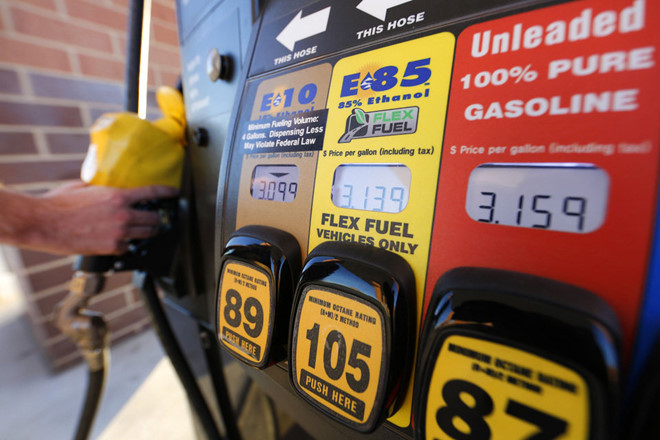Is Ethanol Gasoline Really Environmentally Friendly?
A professor in the US pointed out that ethanol production is costly in terms of fossil fuels and agricultural land.
For decades, humanity has been constantly searching for new fuels. The dependence on fossil fuels has made gas prices unstable, along with negative impacts on the environment.
Hydrogen is seen as a great alternative, but there are complex questions about safety. Some tech companies are betting on solar and wind, but the infrastructure will be expensive. For the energy industry, ethanol is a practical solution in the short term.
|
| Ethanol has been a popular alternative fuel for a long time in the world. |
Ethanol is basically bio-alcohol. In the US, it is usually made from corn. In Brazil, it is made from sugarcane. Wheat, barley, and potatoes are also among the many sources of ethanol in the world.
Ethanol is used as an additive to gasoline at certain percentages for a number of benefits. Ethanol contains a lot of oxygen in its chemical structure, which helps the fuel mixture burn efficiently. Adding a small amount of ethanol (usually one part ethanol to nine parts gasoline) to gasoline also helps reduce greenhouse gas emissions, such as carbon monoxide and nitrous oxide.
According to the US Argonne National Laboratory, greenhouse gas emissions fell by about 10 tons in 2007 due to the use of ethanol fuel. Another study in 2006 in Wisconsin showed that the impact on the ozone layer decreased by 16% since the country adopted E10 gasoline in 1994.
Adding ethanol to the gasoline mix also reduces fuel consumption while driving, and any car can run on E10 biofuel. E85 blends burn cleaner, reducing more harmful emissions into the atmosphere. But only a small number of cars can use this fuel.
Ethanol has clear benefits, but there are two problems. First, there is not much energy in ethanol compared to gasoline (of the same volume), and creating ethanol from food crops will reduce the amount of land available to serve people's food needs.
According to Cornell University professor David Pimentel, ethanol production creates a long-term energy loss. According to his calculations, growing corn and processing it into 1 gallon (3.7 liters) of ethanol requires 131,000 BTUs of energy, but 1 gallon of ethanol contains only 77,000 BTUs of energy.
Furthermore, people are using fossil fuel equipment to grow, store and harvest corn. And even processing corn into ethanol requires fossil fuel machinery, then transporting the ethanol to distribution points. The ethanol industry actually needs a large amount of fossil fuel to produce ethanol.
|
| Ethanol gasoline is popular in the US, mainly E10 and E85. Photo:Howstuffworks. |
Not all scientists agree with Pimentel’s analysis of energy efficiency. The US Renewable Energy Laboratory says it takes just 1 BTU of fossil fuel energy to produce 1.3 BTU of ethanol energy. This means ethanol production is 30% more energy-intensive, contrary to Professor Pimentel’s conclusion.
Professor Pimentel said he does not see a future for ethanol as a truly renewable energy source. He estimated that a car using ethanol for a year would require 44,515 square meters of corn, enough to feed at least seven people.
Not to mention that corn fields in the US need a period of time to recover after harvest. Therefore, there will be a period of time when the land is empty, and there will be no corn for ethanol production. To maintain the ethanol industry, more and more agricultural land will have to be given over to corn cultivation. In the long run, this can lead to food shortages and push up the price of this commodity.
One alternative to ethanol is cellulosic ethanol. This is a biofuel made from non-food sources such as corn stalks or grasses. If scientists can develop this niche, cellulosic ethanol could solve the problem of fuel type and production cost.



